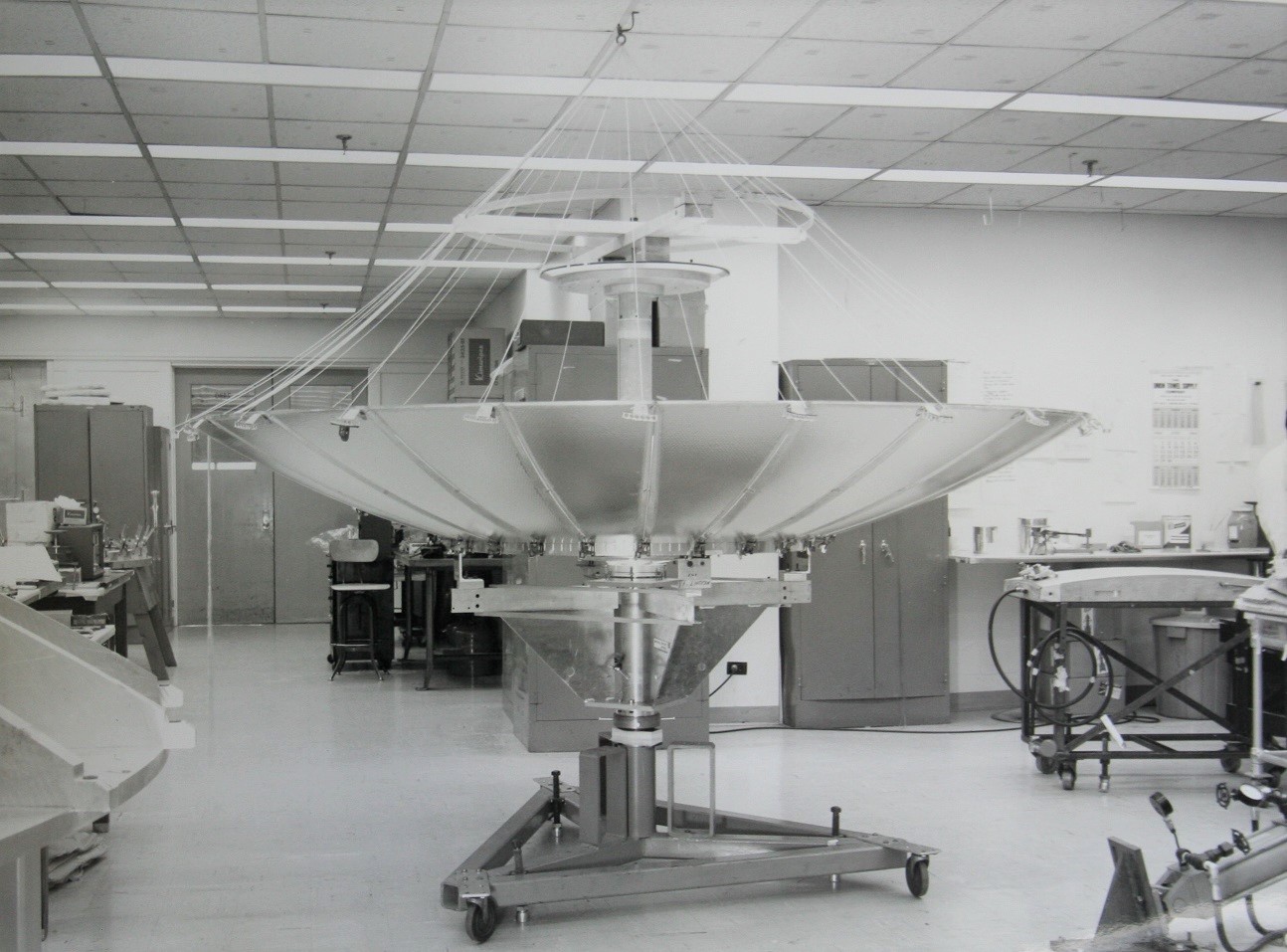|
TR-201
The TR-201 or TR201 is a hypergolic pressure-fed rocket engine used to propel the upper stage of the Delta rocket, referred to as Delta-P, from 1972 to 1988. The rocket engine uses Aerozine 50 as fuel, and as oxidizer. It was developed in the early 1970s by TRW as a derivative of the lunar module descent engine (LMDE). This engine used a pintle injector first invented by Gerard W. Elverum Jr. and developed by TRW in the late 1950s and received US Patent in 1972. This injector technology and design is also used on SpaceX Merlin engines. The thrust chamber was initially developed for the Apollo lunar module and was subsequently adopted for the Delta expendable launch vehicle 2nd stage. The engine made 10 flights during the Apollo program and 77 during its Delta career between 1974 and 1988. The TRW TR-201 was re-configured as a fixed-thrust version of the LMDE for Delta's stage 2. Multi-start operation is adjustable up to 55.6 kN and propellant throughput up to 7 ... [...More Info...] [...Related Items...] OR: [Wikipedia] [Google] [Baidu] |
Delta-P
The Delta-P is an American rocket stage, developed by McDonnell Douglas and TRW, first used on November 10, 1972 as the second stage for the Delta 1000 series. It continued to serve as the second stage for subsequent Delta 2000 and Delta 3000 flights for 17 years, with its last usage on February 8, 1988. It is propelled by a single TRW TR-201 rocket engine, fueled by Aerozine 50 and dinitrogen tetroxide, which are hypergolic. The Delta-P traces its heritage to the Apollo Lunar Module's Descent Propulsion System. The TR-201 engine is the Descent Propulsion System modified to be a fixed thrust engine. The Descent Propulsion System was first fired in flight during the Apollo 5 mission, in a low Earth orbit test on January 22, 1968. As the supply of these surplus Apollo engines was depleted, the Douglas/Aerojet Delta-K upper stage was introduced in the Delta 3000 program. The Delta-K was then exclusively used on the second stage for the Delta 4000, Delta 5000, and subs ... [...More Info...] [...Related Items...] OR: [Wikipedia] [Google] [Baidu] |
Descent Propulsion System
The descent propulsion system (DPS - pronounced 'dips') or lunar module descent engine (LMDE), internal designation VTR-10, is a variable- throttle hypergolic rocket engine invented by Gerard W. Elverum Jr. and developed by Space Technology Laboratories (TRW) for use in the Apollo Lunar Module descent stage. It used Aerozine 50 fuel and dinitrogen tetroxide () oxidizer. This engine used a pintle injector, which paved the way for other engines to use similar designs. Requirements The propulsion system for the descent stage of the lunar module was designed to transfer the vehicle, containing two crewmen, from a circular lunar parking orbit to an elliptical descent orbit with a pericynthion of , then provide a powered descent to the lunar surface, with hover time above the lunar surface to select the exact landing site. To accomplish these maneuvers, a propulsion system was developed that used hypergolic propellants and a gimballed pressure-fed ablative cooled engine that w ... [...More Info...] [...Related Items...] OR: [Wikipedia] [Google] [Baidu] |
Pintle Injector
The pintle injector is a type of propellant injector for a bipropellant rocket engine. Like any other injector, its purpose is to ensure appropriate flow rate and intermixing of the propellants as they are forcibly injected under high pressure into the combustion chamber, so that an efficient and controlled combustion process can happen. A pintle-based rocket engine can have a greater throttling range than one based on regular injectors, and will very rarely present acoustic combustion instabilities, because a pintle injector tends to create a self-stabilizing flow pattern. Therefore, pintle-based engines are specially suitable for applications that require deep, fast, and safe throttling, such as landers. Pintle injectors began as early laboratory experimental apparatuses, used by Caltech's Jet Propulsion Laboratory in the mid-1950s, to study the mixing and combustion reaction times of hypergolic liquid propellants. The pintle injector was reduced to practice and developed by S ... [...More Info...] [...Related Items...] OR: [Wikipedia] [Google] [Baidu] |
TRW Inc
TRW Inc., was an American corporation involved in a variety of businesses, mainly aerospace, electronics, automotive, and credit reporting.http://www.fundinguniverse.com/company-histories/TRW-Inc-Company-History.html TRW Inc. It was a pioneer in multiple fields including electronic components, integrated circuits, computers, software and systems engineering. TRW built many spacecraft, including Pioneer 1, Pioneer 10, and several space-based observatories. It was #57 on the 1986 Fortune 500 list, and had 122,258 employees. The company was called Thompson Ramo Wooldridge Inc., after the 1958 merger of the Ramo-Wooldridge Corporation and Thompson Products. This was later shortened to TRW. The company was founded in 1901 and lasted for just over a century until being acquired by Northrop Grumman in 2002. It spawned a variety of corporations, including Pacific Semiconductors, The Aerospace Corporation, Bunker-Ramo and Experian. Its automotive businesses were sold off by North ... [...More Info...] [...Related Items...] OR: [Wikipedia] [Google] [Baidu] |
Pressure-fed Engine (rocket)
The pressure-fed engine is a class of rocket engine designs. A separate gas supply, usually helium, pressurizes the propellant tanks to force fuel and oxidizer to the combustion chamber. To maintain adequate flow, the tank pressures must exceed the combustion chamber pressure. Pressure fed engines have simple plumbing and have no need for complex and occasionally unreliable turbopumps. A typical startup procedure begins with opening a valve, often a one-shot pyrotechnic device, to allow the pressurizing gas to flow through check valves into the propellant tanks. Then the propellant valves in the engine itself are opened. If the fuel and oxidizer are hypergolic, they burn on contact; non-hypergolic fuels require an igniter. Multiple burns can be conducted by merely opening and closing the propellant valves as needed, if the pressurization system also has activating valves. They can be operated electrically, or by gas pressure controlled by smaller electrically operated valves. Car ... [...More Info...] [...Related Items...] OR: [Wikipedia] [Google] [Baidu] |


